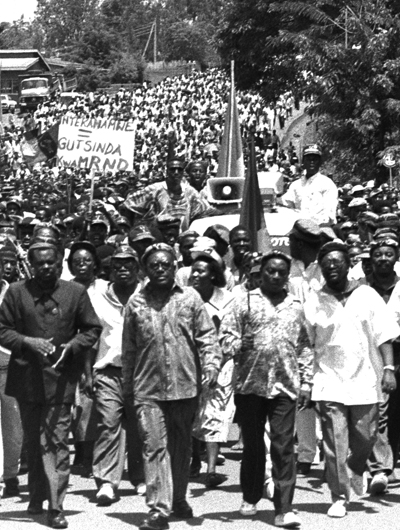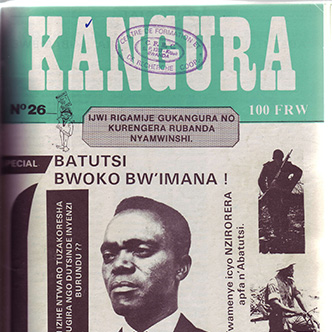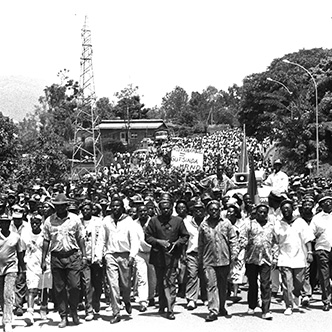
Understanding the event
The figure of the enemy and the genocide project
The mobilization of the Hutu population was accompanied by fierce propaganda against the "enemies" of the Habyarimana regime. Organized, this propaganda is relayed by all the existing media: newspapers, radios, television, political meetings... While no religious, linguistic or territorial rivalry divides Rwandan society, the reference to a defensive war imaginary since independence and the permanent use of calumnious terminology to describe the Tutsi contributes to galvanize the crowds.
The spread and repetition of a denigrating phraseology, rejecting the Tutsi as pests that must be disposed of, is a determining element in the process of animalization and killing of victims, who are cruelly slaughtered like cattle.
Since the 1960s, the introduction of the term
This racist ideology, exalted by the propagandists, resulted in a genocidal project and a planning of massacres where different layers of the Rwandan state intervene. This plan has not been recorded in an official file but it is clear from the events confirmed by a number of archived documents.





